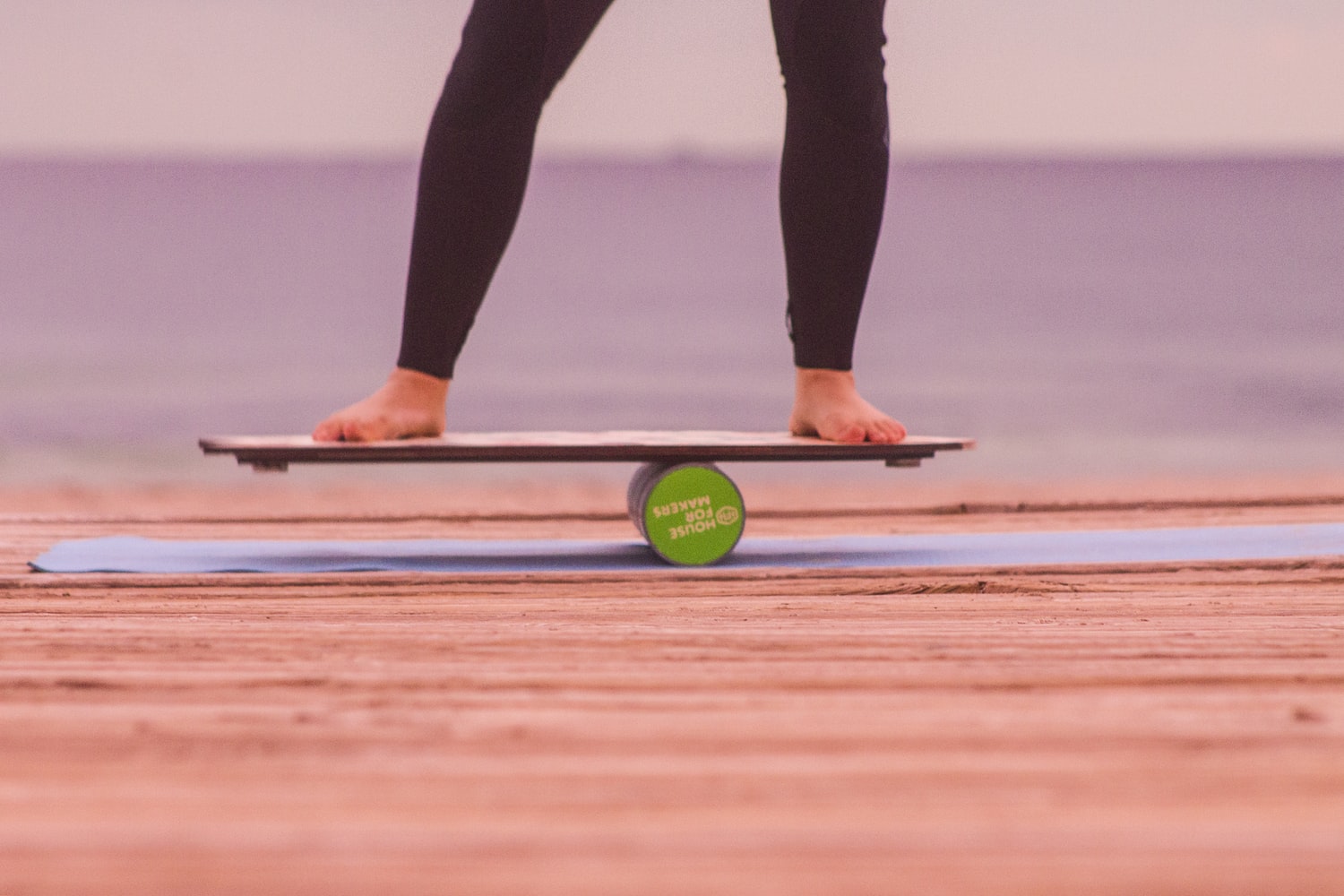
Any sense or element of our experience can become an object of meditation, including your sense of balance. Try this simple “Balance Meditation” to cultivate stillness in both body and mind.
When individuals begin their meditation practice, the breath is often the main object of focus.
However, any sense or element of our experience can become an object of meditation. A simple sound meditation focuses our attention on our hearing and auditory stimuli, and a sky gazing meditation during a sunset or clear night sky focuses our attention on our vision and sight.
A big theme of this site is to take awareness that we have cultivated during meditation and apply it to different senses, different experiences, and different actions. In truth, you can take any sense and use it as an object of meditation – and this includes our sense of balance.
I was messing around in my backyard the other day and I discovered a brick and a plank of wood. I laid down the brick on its side and then put the wood on top of it. Then I stood on top of my new apparatus and tried to maintain my balance.
Basically, I created a make-shift balancing board, such as this:

I became really focused on how difficult it was for me to keep a still posture and maintain my balance.
As I became more aware, I noticed the subtleties of my weight shifting across the board. From one side to the other, and back again. I noticed when my feet were closer together it was easier for me to keep my composure, but when they were further apart it became more difficult. I kept experimenting, exploring, and discovering new aspects of my body and muscle control.
It fascinates me how taking our awareness and applying it to something as simple as balance can reveal new complexities about our conscious experience.
You can even do a short practice right now by balancing on one leg and feeling how your “center of gravity” shifts as you try to maintain your composure. Notice how your arms move as you try to find stillness.
We often forget to be grateful for our senses, so we take them for granted. This even includes our sense of “balance.”
I get up everyday, walk around, and hardly ever think about how my weight is distributed throughout my body or how my body and muscles work together to keep me upright; but this is hugely important for someone who practices yoga, gymnastics, likes to surf or skateboard, or maybe someone who is getting older and more clumsy.
Practicing balance can have health and fitness benefits like improving posture, muscle control, and circulation. It can also strengthen our mind-body connection by improving our concentration and body awareness.
It’s a really simple and easy thing to practice. It’s not hard to just come up with some kind of “balancing apparatus” and begin playing with it. I personally find it really fun and a good exercise in self-awareness and self-control.
Finding balance requires a focus and one-pointedness of both body and mind.
It requires concentration. If my mind starts thinking about what to eat for lunch or what movie I want to watch later, then my balance begins to waver and I lose a bit of my control. To balance, I need to dedicate my attention toward my body, its movements, and its relationship with the balancing board.
Your mind and body need to become one.
In a way, the balancing board has to become a part of you – not unlike how other tools in our environment seem to become a “part of us” when we use them, such as the “car body” phenomenon, where our “body map” often takes the shape of a car we drive.
The more we become one with the balancing board, the more stillness we find in both body and mind. It’s not just a metaphor, it’s true!
Enter your email to stay updated on new articles in self improvement:
